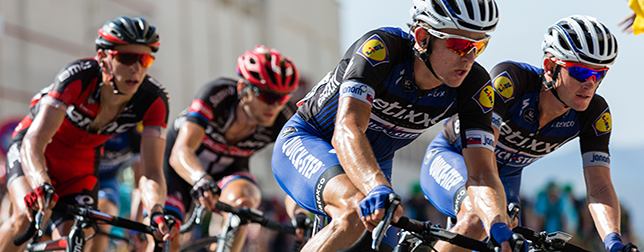A study conducted by International Federation of Sports Medicine (FIMS) explains ways to accelerate integration of wearable devices into sports. Our CEO Christian Stammel, MBA, of Wearable Technologies is among the authors.
Wearables are receiving considerable attention from the athletic community as a growing number of companies are producing these devices. However, use of wearable devices go back hundreds of years. Around 500 years ago, Leonardo da Vinci used pedometers which were among the first wearables developed to measure physical activity. In modern sports wearable devices may be used to monitor and analyze physiological parameters and individualize training programs to boost performance and health.
Read more Wearable Technology: The Latest Trend in Professional Sports
Major advances in technology over the past two decades have resulted in the triaxial accelerometer that measures movements in the anteroposterior, mediolateral, and vertical direction, alleviating the limitations of previous devices. Accelerometry-based wearables can be used to objectively assess physical activity and interventions aimed at improving health-related outcomes.
Wearable technology emerged as the top fitness trend in a worldwide survey conducted recently by the American College of Sports Medicine (ACSM), predicting sales of U.S. $1.5 to U.S. $2.5 billion for some devices.
A recent study
A recent study investigated the usefulness of a mobile application developed by sport scientists and engineers for Sub2hrs, a project aimed at promoting drug-free and fair sport by running a sub 2-hour marathon. The Sub2 mobile app was developed as a ‘‘hub’’ to measure a range of data to help elite runners and their support teams to improve athletic performance.
The app provides a live data feed of land and air temperature based on geostationary satellite data as well as state-of-the-art machine learning techniques.
The Sub2 mobile application runs on smartwatches with the Android Wear 2.0 operating system and standalone connectivity, overcoming the need for the smart watch to be paired to a smartphone. An array of sensors measured heart rate, running pace, and core temperature along with other physiological and kinematic parameters were integrated to provide real time and comprehensive overview of the athlete. In the past, such measurement was only possible by using tablets held by nearby cyclists following the runners at all times.
Read more Catapult Launches PLAYR, A Wearable with AI-Enabled SmartCoach
Quality Control
It is crucial to maintain quality control of the hardware and the data generated in order to enhance athletic performance. While there are many wearables that claim to deliver reliable and valid data to the user, few wearables have had rigorous independent testing.
Data Collection and Handling
To improve high-level performance, a variety of multiple wearables will be needed to gather the relevant data within a single database for interpretation. Data that are standardized and easy to share will improve and facilitate collaboration and big data analytics may identify new relationships between the parameters measured, further enhancing sports performance and health.
Conclusion
Athletes of the future will have the option of using an increasing number of wearables and each new device should add beneficial information to the training process with the goal of helping sports scientists and health care providers improve their athlete’s or patient’s performance and/or health. Software engineers, athletes and other stakeholders has the potential to improve their wearable devices for athletes by sharing data and knowledge between themselves.
Read the full paper here.
Other authors of the study are: Peter Duking, MSc; Billy Sperlich, PhD; Shaun Sutehall, BSc; Borja Muniz-Pardos, MSc; Giscard Lima, BPhED, MSc; Liam Kilduff, BSc, PhD; Iphigenia Keramitsoglou, MSc, PhD; Guoping Li, MD; Fabio Pigozzi, MD, PhD; and Yannis P. Pitsiladis, MMedSci, PhD, FACSM.













